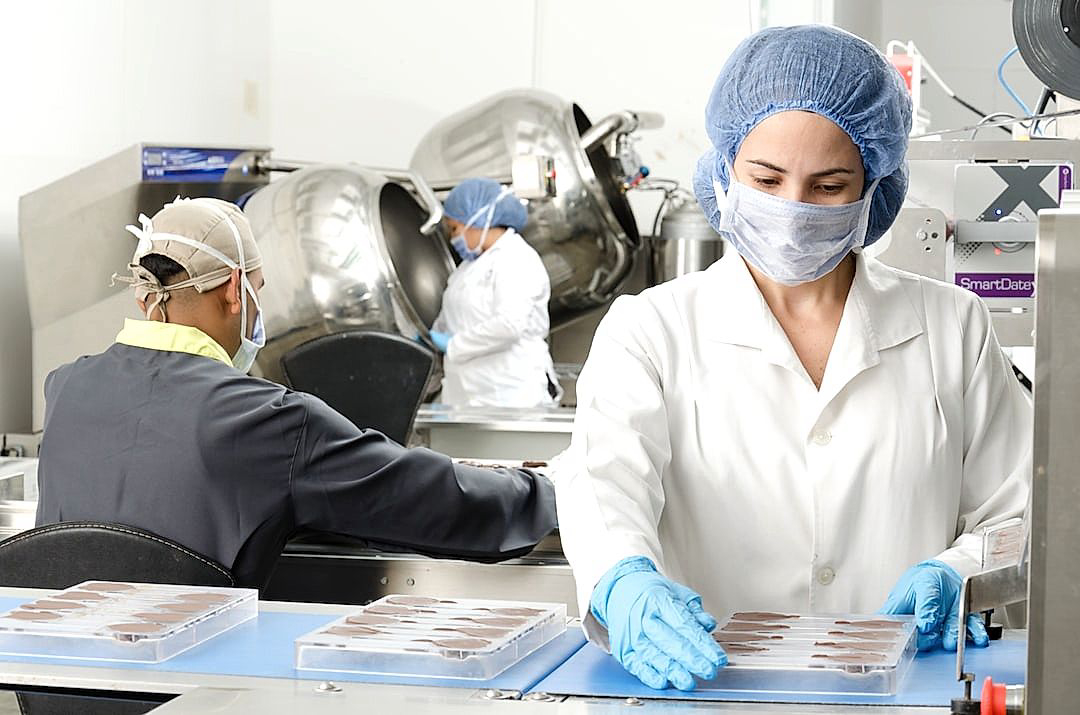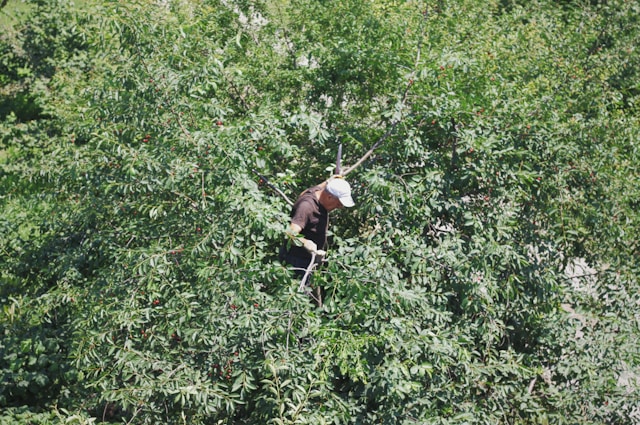Ensuring food safety is a critical public health issue.
From farmers tending their fields to the family preparing dinner at home, each step in the food supply chain matters considerably.
The goal is to protect consumers from potential health risks, such as foodborne diseases.
This article intends to provide a comprehensive understanding of the different steps involved in securing food safety.
Furthermore, we will delve into the best practices and techniques that can be used at each stage.
This way, we can guarantee that safety is upheld from the farm all the way to the dining table.
Steps To Secure Food Safety From Field To Table
1. Follow hygiene protocols during crop cultivation and harvesting.
To ensure food safety, it is essential to maintain cleanliness throughout the process of growing and harvesting crops.
Practicing good hygiene at this early stage reduces the risk of contamination of crops from dangerous bacteria, viruses, and parasites that thrive in dirt and can be transferred to the crops from the soil.
One fundamental hygiene protocol is washing hands properly and frequently, especially when coming into contact with the plants or soil.
No less important is the use of clean, undamaged harvesting tools and equipment as damaged tools can harbour harmful microorganisms.
A strict regimen of cleaning and disinfecting these tools is vital not just before use but also after usage, to prepare them clean for the next use.
Plant diseases, pests, and harmful bacteria often originate from infected and diseased plants, hence the practice of removing such from the field as soon as they’re identified is crucial for plant health hygiene.
Furthermore, it is also crucial to properly train farmers on hygienic farming methods, to further minimize the risk of foodborne illnesses and contamination at source.
Another good practice is effective waste management, which means getting rid of farm waste in a sanitary and environmentally friendly manner thereby avoiding contamination by waste runoff.
Wearing clean and suitable personal protective equipment (PPE) during crop cultivation and harvesting is another essential part of observing hygiene protocols.
The use of sanitized harvesting containers or baskets for transporting crops from the field to the storage area prevent harsh handling which might lead to bruising hence creating a conducive environment for disease-causing microbes.
Regular cleaning and disinfecting of storage areas, vehicles and machinery used in harvesting reduces the risks of contaminating the freshly harvested crops.
The practice of crop rotation and cover crops can also contribute to the cleanliness of the soil, reducing the need for chemical fertilizers and pesticides which can taint crops.
An effective irrigation system that uses clean water should also be put in place to prevent the possibility of introducing waterborne pathogens to the crops.
Adopting these good hygiene practices during crop cultivation and harvesting can remarkably improve the safety of the food that ends up on our plates.
By focusing on these hygiene protocols from the start of the food production process, a foundation is laid to ensure that safer, healthier food products are delivered from the field to the table.
2. Ensure safe storage and transportation conditions.
The safety of food products depends largely on adherence to certain storage and transportation standards.
Proper storage conditions are essential to prevent deterioration of the quality and safety of food items.
Temperature, for instance, is a crucial factor to consider in this regard.
Many edible products require controlled storage conditions with specific temperature ranges, to keep them fresh and safe from bacterial growth.
For instance, perishable items like meat, dairy, and certain fruits and vegetables require refrigeration to maintain their safety and freshness.
Similarly, consistent temperature control is also vital during food transportation to prevent potential contamination or degradation of quality.
It is equally important to ensure that food products are protected from pests during storage.
Rats, insects, and birds can not only ruin the food physically but also spread diseases which may pose a serious health hazard.
Therefore, effective deterrent measures like sealed containers and pest control methods are a must in every storage facility dealing with food items.
The storage facility should also be kept clean and free from dust or other contaminants.
Additionally, food products should not be kept together with non-food items especially chemicals or cleaning materials as it can lead to food contamination.
Ensuring safe transportation conditions is also a critical part of the food safety process.
Similar to storage standards, maintaining proper temperature control, cleanliness, and protection from contaminants and pests are crucial aspects of safe food transportation.
The vehicles or containers used for transporting food should be designed to meet these specific conditions, ensuring the wholesomeness of food products is preserved till it reaches consumers.
In conclusion, proper monitoring systems should be adopted to ensure that these safety standards are being consistently met during both storage and transportation processes.
Regular inspection by food safety authorities can also aid in ensuring the compliance of these standards, thus protecting consumers from potential foodborne illnesses.
Ultimately, by ensuring safe storage and transportation conditions, we can take significant steps toward securing food safety from the field to the table.
3. Practice hygienic food processing and packaging methods.
The food processing phase is crucial to secure food safety, and it’s critical that proper hygiene protocols are adhered to during this stage.
Microbial contamination of food can occur at any point during the processing phase, so it’s essential to maintain a clean and hygienic environment.
Good manufacturing practices (GMP) coupled with a robust HACCP (Hazard Analysis Critical Control Point) plan can effectively minimize risks associated with foodborne illnesses and contamination.
These institutionalized food safety systems work in unison to monitor and control potential hazards during every step of the food production process.
Employees involved in the food processing stages should be well-trained in hygiene protocols and should be aware of the potential risks associated with their tasks.
Wearing appropriate personal protective equipment (PPE), maintaining personal cleanliness, and regularly sanitizing equipment are all essential practices in a food processing unit.
It’s equally crucial to monitor the quality of raw materials used in food processing.
Using degraded or inferior quality raw materials can introduce harmful microbes into the product, affecting its safety and integrity.
Fermentation, pasteurization, cooking, freezing, and other food processing techniques should be executed correctly to ensure that no harmful bacteria or contaminants are present in the final product.
During packaging, the use of clean, sanitised and food-safe packaging material is essential to prevent cross-contamination.
Further, the design and integrity of packaging play a significant role in maintaining food safety.
Inappropriate packaging can lead to food spoilage and increase the risk of foodborne diseases.
The packaging process should, therefore, be under continuous inspection and monitoring to identify and rectify any significant issues promptly.
Critical parameters like temperature and humidity in the processing unit and storage areas should be monitored and controlled to ensure the shelf-stability of the product.
Regular audits, inspections, and quality checks should be implemented to arithmetically monitor and improve the hygienic practices in food processing and packaging.
By instituting and strictly adhering to these protocols and methodologies, we can ensure that food processing and packaging are conducted in a hygienic and safe environment – a critical step in securing food safety from field to table.
.4. Safeguard Food During Retail Display and Sale
Food safety does not end in processing, it must continue even up to retail display and sale.
To safeguard food during retail display and sale means to put strategies in place to prevent contamination, control bacteria growth, and ensure the write storage conditions are maintained.
One important measure is to ensure that refrigerated and frozen foods are displayed within their ideal temperature ranges to preserve quality and safety.
For example, refrigerated foods should generally be kept at internal temperatures below 40°F, while frozen foods should typically be maintained at 0°F or below.
This helps to slow the growth of harmful bacteria that can lead to foodborne illnesses.
Additionally, retailers should use clean display cases and follow first-in-first-out (FIFO) principles to ensure older food items are sold before new ones.
This helps minimize the risk of selling expired or spoiled food products to consumers.
Product separation is another critical implementation in the retail space to prevent cross-contamination.
For instance, raw meats and fish should be kept separate from fruits or other ready-to-eat foods to avoid potential spread of bacteria.
Also, frequent cleaning and sanitizing of food contact surfaces, including display cases and utensils, should be conducted to maintain a hygienic environment.
Employees selling the food should also follow strict hygiene practices, including regular washing of hands, wearing gloves when needed, and reducing direct contact with food as much as possible.
Food businesses should also follow proper labeling practices to provide consumers with accurate information about the products they’re purchasing.
Labels should include important information such as manufacture and expiration dates, ingredients, allergen information, and safe handling instructions.
Similarly, businesses must take action in case of product recalls to swiftly remove potentially hazardous foods from shelves and inform consumers about the recall.
Moreover, retailers should also ensure that their third-party suppliers maintain stringent food safety practices, because contamination can occur anywhere along the supply chain.
Furthermore, continuous staff training and periodical auditing are necessary to maintain safety standards in the retail sector.
Ultimately, ensuring food safety during retail display and sale requires a systematic and diligent approach but developing these strategies and implementing them effectively will protect consumers and maintain public trust.
5. Adopt proper home storage and cooking practices.
One of the critical aspects of ensuring food safety from field to table is adopting proper home storage and cooking methods.
Improper home storage and cooking practices can expose food to contamination by harmful pathogens.
It is therefore very important to understand and apply the appropriate storage and cooking techniques at home to minimize the risk of foodborne illnesses.
The first step in this process is to properly store your food at home.
This includes separating raw and cooked food to avoid cross-contamination and storing perishable food items, like meat and dairy products, in the refrigerator immediately.
All food products should be stored in clean, covered containers, and raw meats should be stored on the lowest shelf in the refrigerator to prevent any juices from contaminating other food items.
Food items should be stored at the proper temperatures to maintain their safety and quality.
Furthermore, understanding the shelf-life of different food products and managing them appropriately is crucial.
“Best before” and “use by” dates on food products should be strictly observed to reduce the risk of consuming spoiled food.
You should always discard any food that looks, smells, or tastes off, regardless of the indicated shelf-life.
When it comes to cooking, it is essential to cook food at the right temperature to kill any potential harmful pathogens.
A food thermometer can be extremely handy in ensuring that food is cooked to a safe internal temperature.
While cooking, it is also necessary to stir and flip food regularly to ensure even heat distribution and thorough cooking.
Apart from these, maintaining cleanliness and hygiene in the kitchen and using clean utensils and dishes is of utmost importance.
The use of contaminated knives, cutting boards, or other tools can easily lead to food poisoning, so it is important to keep them clean and sanitized.
Last but not least, always remember to wash your hands thoroughly before and after handling food.
Dirty hands can be a significant source of food contamination, and thus, keeping them clean plays a crucial role in ensuring food safety from field to table.
The Bottom Line
Ensuring food safety is a fundamental aspect of both food production and consumption.
It’s crucial to observe proper hygiene protocols during the cultivation and harvesting process, alongside maintaining suitable conditions during the storage and transportation of crops.
The processing and packaging of food must also carry strict hygienic principles to prevent cross-contamination.
Retail displays and sales areas play significant roles in food safety, thus, should always keep frequent checks for freshness and cleanliness.
Lastly, at-home storage and proper cooking methods are essential in avoiding foodborne illnesses.
Overall, adhering to these steps will result in improved food safety and healthier populations.




